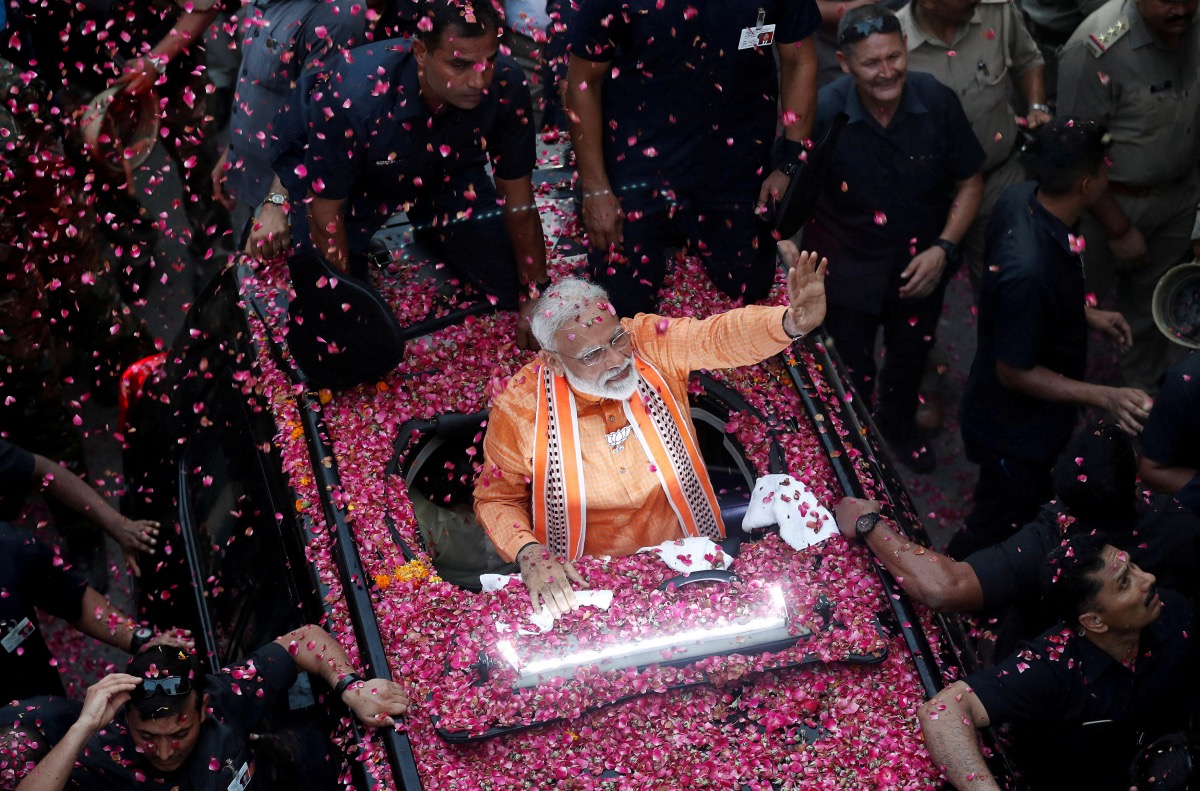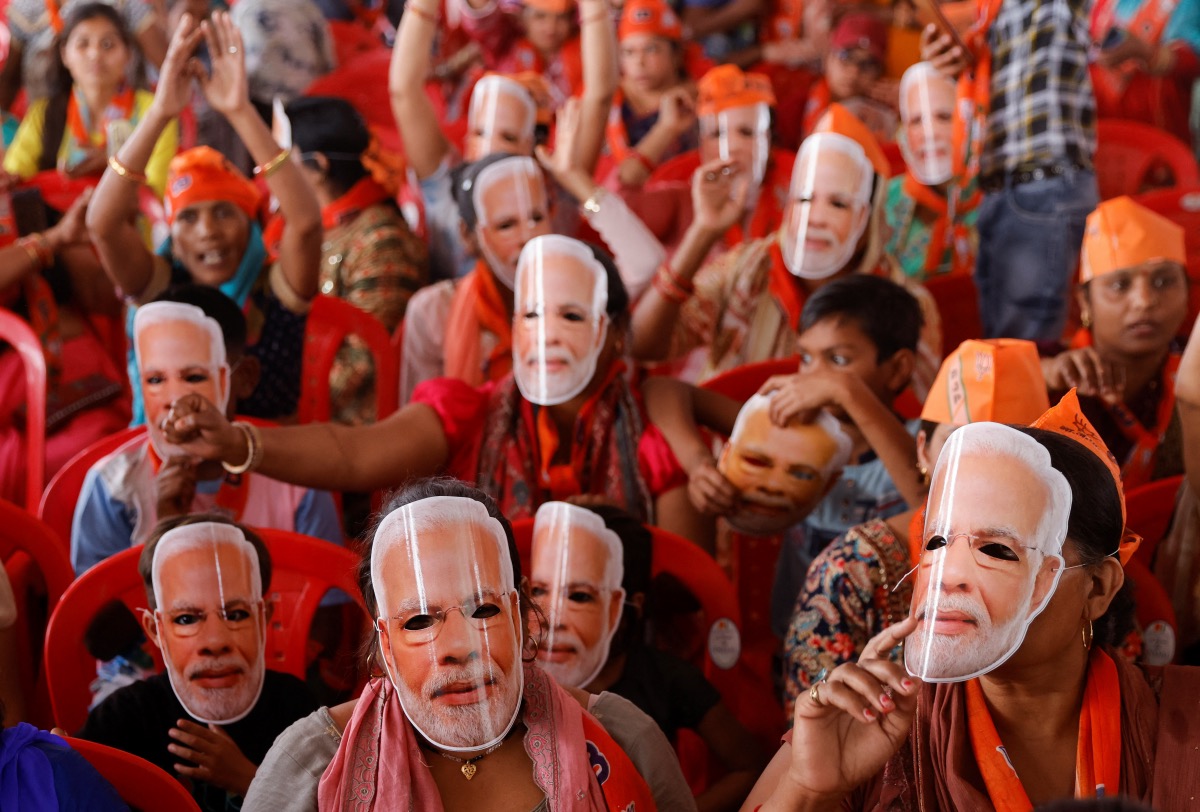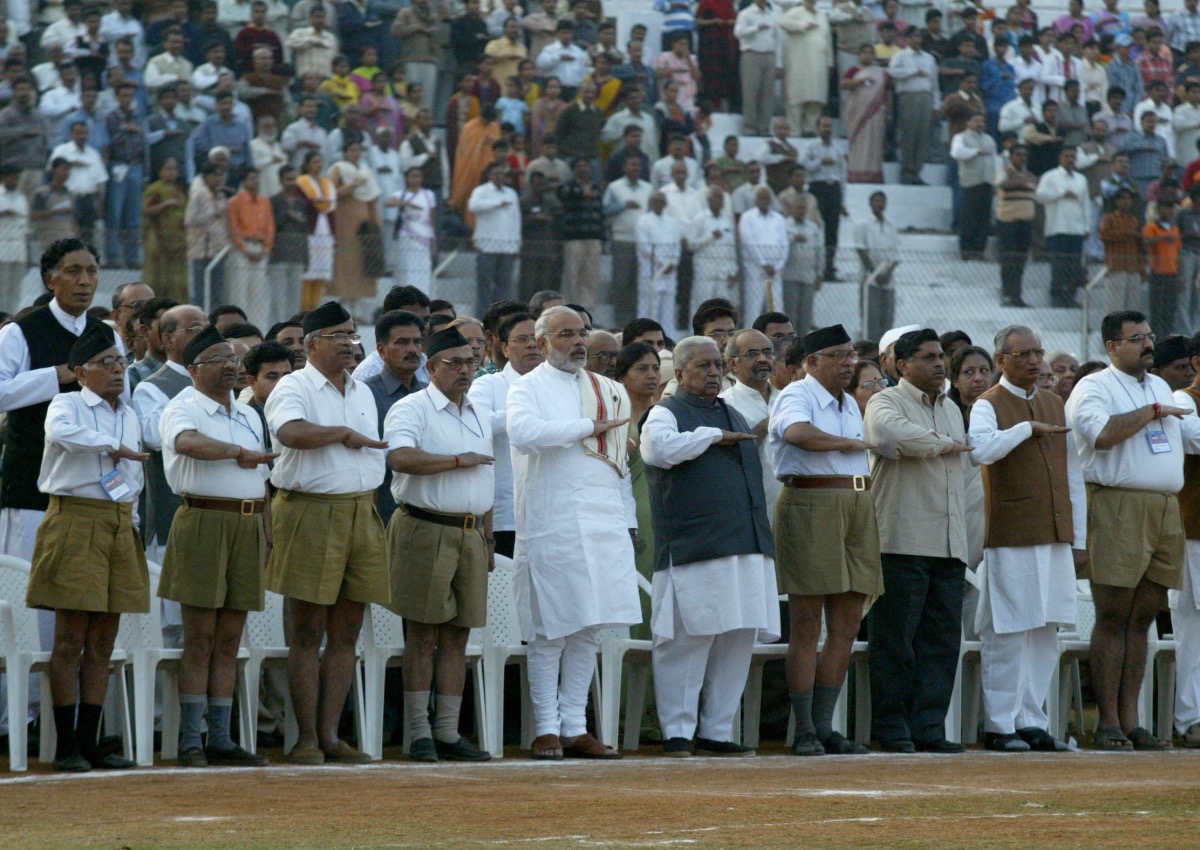
RUPAM JAIN and KRISHNA N DAS, of Reuters, report on how Prime Minister Narendra Modi has shaped the India of today…
New Delhi, India
Reuters
Narendra often says he likes to think big, dream big and act big.
Having sold tea at a railway station as a boy while his mother washed dishes to make ends meet, the man who looks set to be only the second Indian to win three national elections in a row has come a long way from his humble beginnings. And, he is still thinking big.

India’s Prime Minister Narendra Modi waves to supporters during a roadshow in Varanasi, India, on 25th April, 2019. Varanasi is Modi’s election constituency. PICTURE: Reuters/Adnan Abidi/File photo
Opinion polls ahead of the election starting today, 19th April, predict he will equal the three-term record of India’s first Prime Minister, the Western-educated and wealthy Jawaharlal Nehru, who famously called India’s independence in 1947 a “tryst with destiny”.
“I am dedicating every moment to making India a developed country. That’s why I am working 24X7 for 2047.”
– Narendra Modi
If he wins, it may be the 73-year-old Modi’s last term in office and he wants to cement a legacy of setting India on the path to abolishing poverty and becoming a fully developed nation by 2047, the 100th year of independence from British colonial rule.
He has set a tentative target of increasing the size of the economy by about eight times to $US29 trillion by then and the per-capita income by about seven times to nearly $US18,000, apart from securing a permanent seat at the UN Security Council.
“I am dedicating every moment to making India a developed country,” Modi said at a campaign rally this month. “That’s why I am working 24X7 for 2047.”
The opposition says another term for Modi could severely damage India’s secular and democratic traditions, arguing his Hindu nationalist agenda has polarised the country. He has also been accused of authoritarian rule, a clampdown on dissent and politically motivated arrests of key opposition leaders for alleged corruption.

Supporters of India’s Prime Minister Narendra Modi wear masks of his face, as they attend an election campaign rally in Meerut, India, on 31st March, 2024. PICTURE: Reuters/Anushree Fadnavis/File photo
In a relentless pursuit of votes for nearly 23 years, beginning in 2001 when he became chief minister of his native Gujarat state, Modi has not shied away from using his modest upbringing to build a following in a country where hundreds of millions of its 1.42 billion people are poor.
“I know the pain of living under a weak roof,” he said this week in Bastar, one of the most underdeveloped regions in India.
“I know what a mother goes through when there is no food at home. I know how helpless one feels when there is no money to buy medicine. Therefore, I decided that I will not rest until I remove every worry of the poor.”
He regularly ridicules the Nehru-Gandhi dynasty for what he sees as its entitled control of the main opposition Congress party despite heavy defeats in the last two elections, while he himself has kept his family at a distance – and out of politics.
“I have left my family. Not for myself, not for fun, but for my country. This is my country, this is my family,” he told a rally last month.
Modi has not visited his family since his mother, who used to live in Gujarat with one of her four other sons, died in late 2022, said his younger brother Pankaj. Modi’s estranged wife Jashodaben lives separately in the western state.
“My brother has always maintained a very clear boundary between his work and family,” Pankaj Modi, a retired Gujarat government official, told Reuters in Gandhinagar, the state capital.
Modi’s ability to overcome a difficult childhood has made him successful, but he may be too successful, said Surendra Kumar Dwivedi, a former head of the Department of Political Science at Lucknow University.
“My sole issue with Modi today is that he has become larger than the party itself,” he said. “In a democratic system…a party should always supersede an individual.”

Gujarat Chief Minister Narendra Modi along with members of the Hindu nationalist organisation Rashtriya Swayamsevak Sangh (RSS), the de facto parent of the Bharatiya Janata Party, perform a salute on the last day of a seven-day long camp by the RSS in Ahmedabad, India, on 1st January, 2006. PICTURE: Reuters/Amit Dave /File photo
Modi and his Bharatiya Janata Party (BJP) have consistently wooed the majority Hindu community, including by shepherding the building of a Hindu temple on the site of a razed mosque, igniting a wave of religious fervour.
His approval rating is 75 per cent, the highest among 25 world leaders tracked by US data intelligence company Morning Consult.
Modi was once a pariah in the Western world because of deadly religious riots when he was chief minister of Gujarat in 2002. But he is now courted, thanks to India’s world-beating economic growth and its position as a counter-balance against China.
At least 1,000 people, mostly Muslims, were killed across Gujarat in the riots, although activists put the toll at more than twice that number. Critics accused Modi of failing to protect Muslims, but he denied the charges and a Supreme Court-ordered investigation found no evidence to prosecute him.
The United States, nevertheless, has raised concerns over the treatment of Muslims, underprivileged Hindus, Christians and other religious minorities in India in his rule. Modi says his government works for the welfare of all without discriminating.
We rely on our readers to fund Sight's work - become a financial supporter today!
For more information, head to our Subscriber's page.
Modi has not addressed a single press conference in the past decade, but the Indian media fawns over him, giving him wall-to-wall coverage as he tours Hindu temples or speaks at rallies.
He honed his oratory as a full-time propagandist for the Hindu nationalist Rashtriya Swayamsevak Sangh (RSS), the de facto parent of the BJP that he joined after school, distancing himself from his family.
With thinning white hair, a neatly trimmed white beard and immaculate Indian attire, Modi is the dominant face of election campaigns for the BJP.
In 2015, he was ridiculed for wearing a suit embroidered repeatedly with his name while meeting US President Barack Obama. The suit was later auctioned and sold to a Gujarat diamond merchant for over half a million US dollars that was used on a project to clean the Ganges river.

India’s Prime Minister Narendra Modi holds an election material as he stands next to Chief Minister of Uttar Pradesh Yogi Adityanath, during his roadshow, ahead of the general elections, in Ghaziabad, India, on 6th April, 2024. PICTURE: Reuters/Anushree Fadnavis/File photo
Modi’s aides and his ministerial colleagues say the demands on his time mean he sleeps little.
“I am working with a boss who practically works 20 hours a day and has not taken a single vacation in whatsoever number of years I have seen him,” Ashwini Vaishnaw, minister for railways and electronics, told a recent event.
– Additional reporting by SAURABH SHARMA






